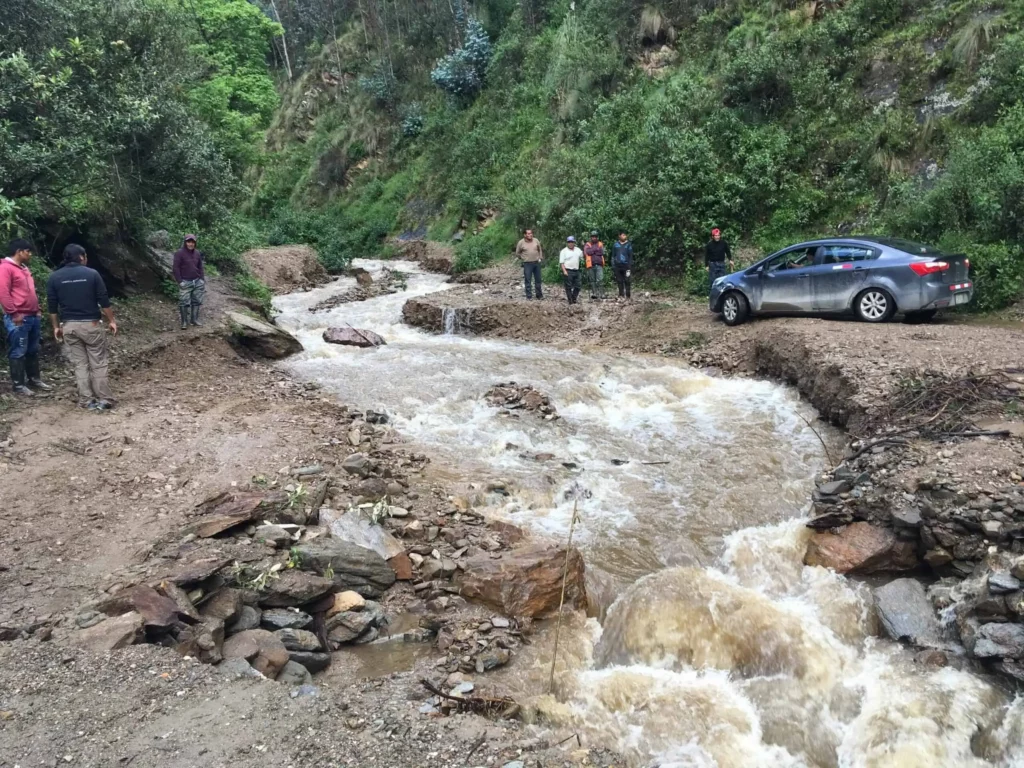
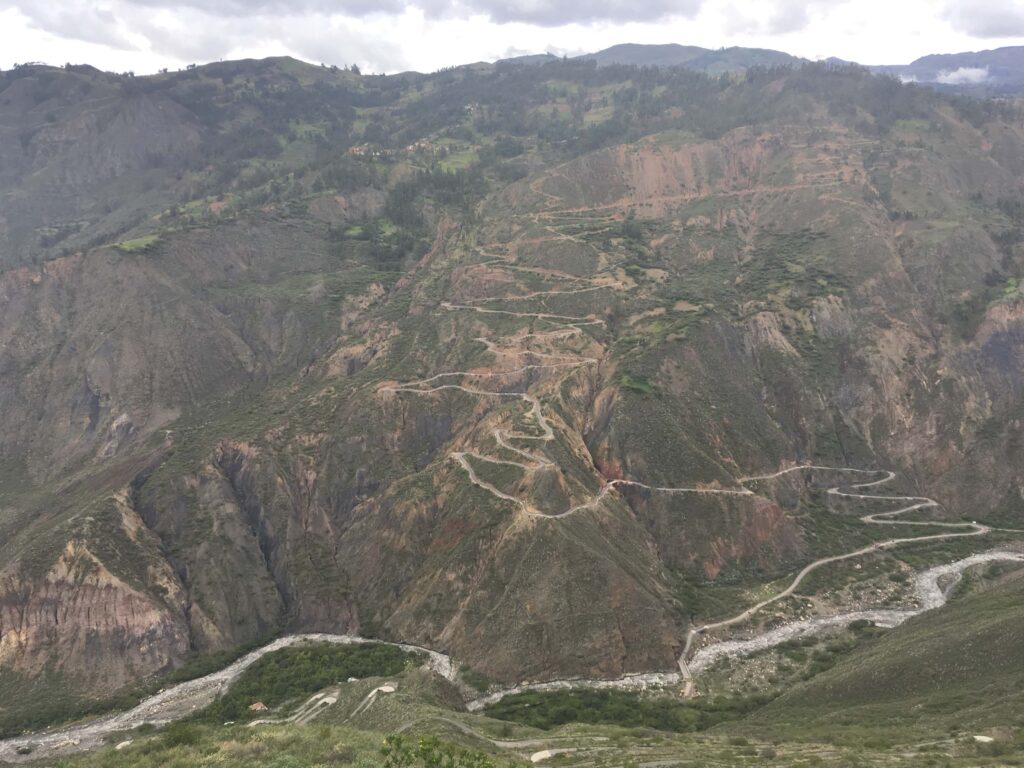

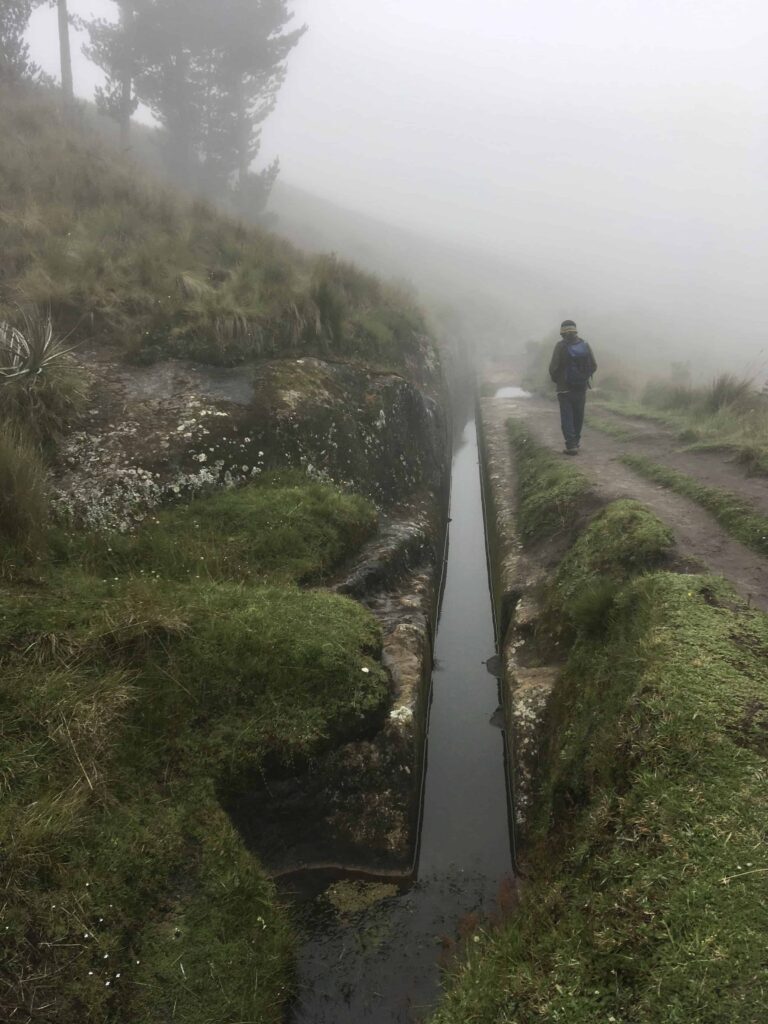
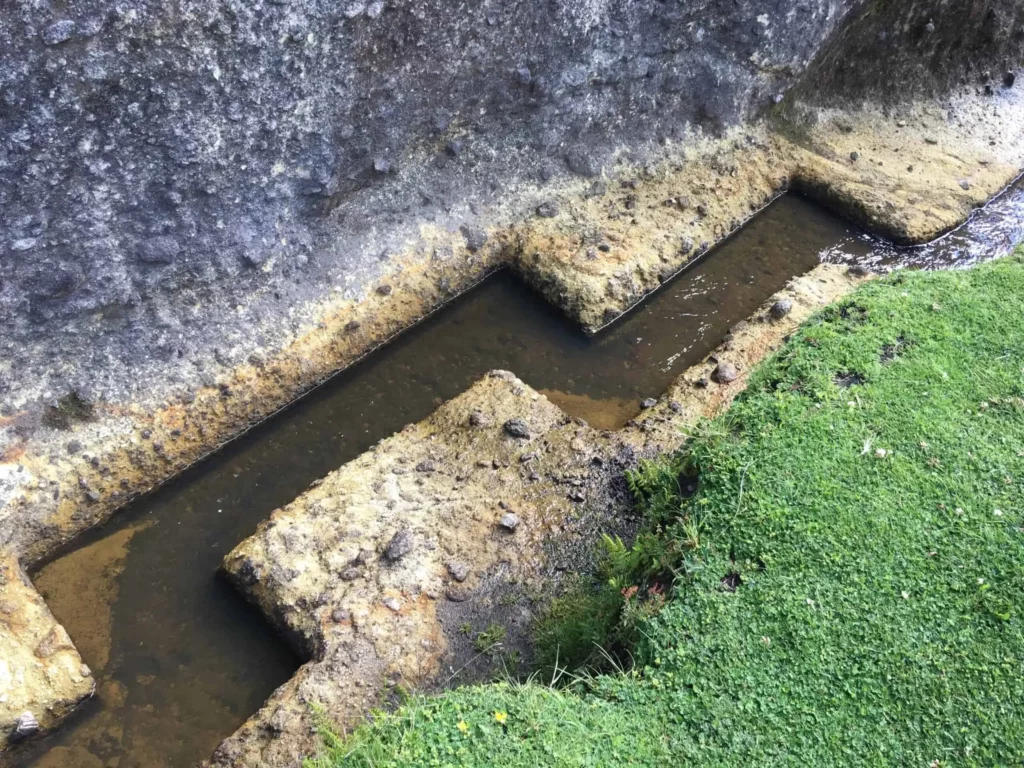


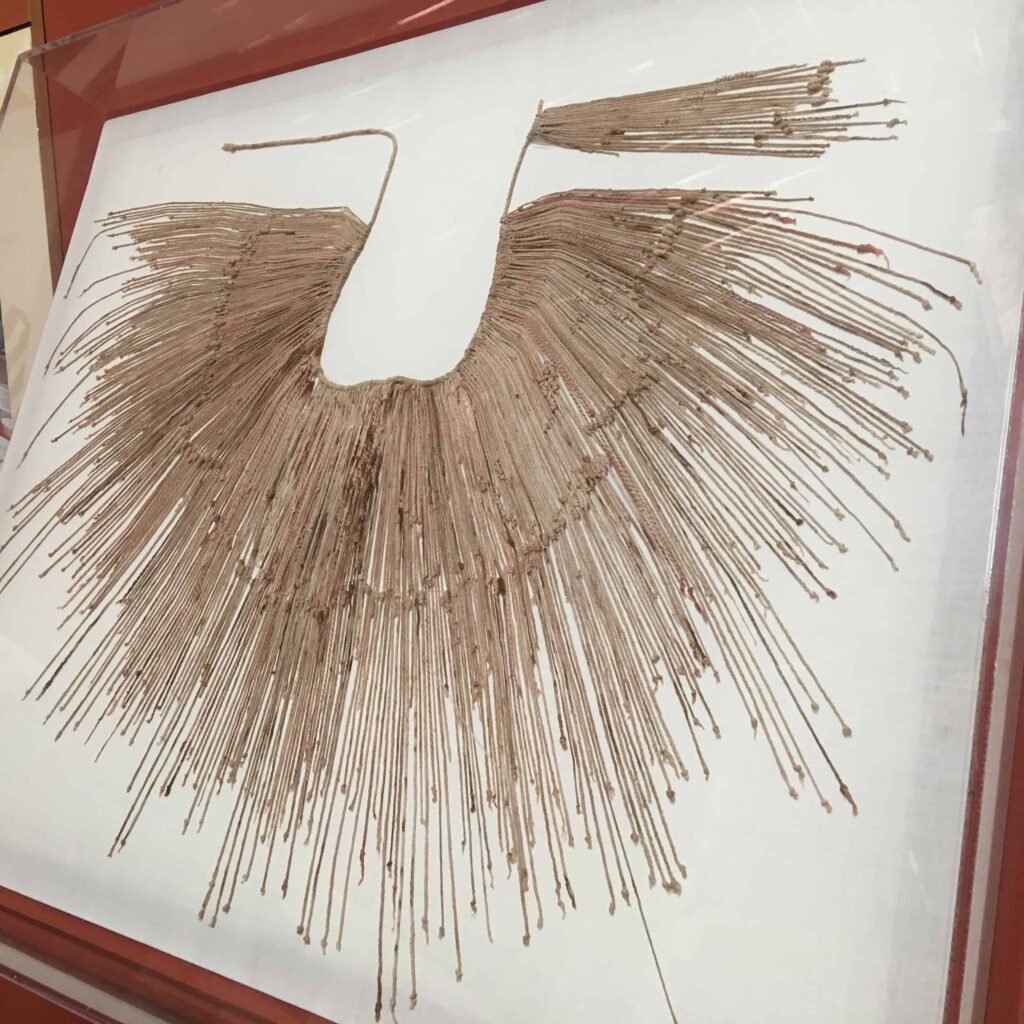
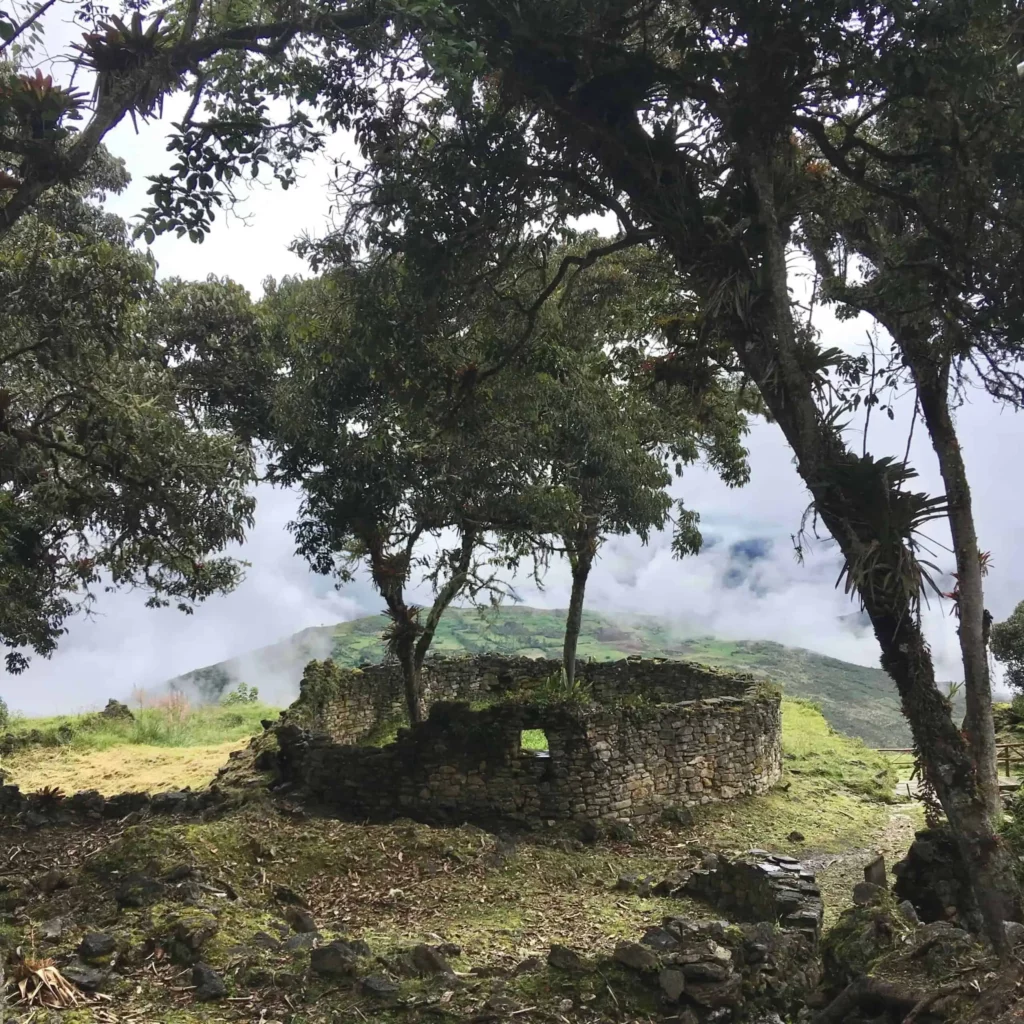
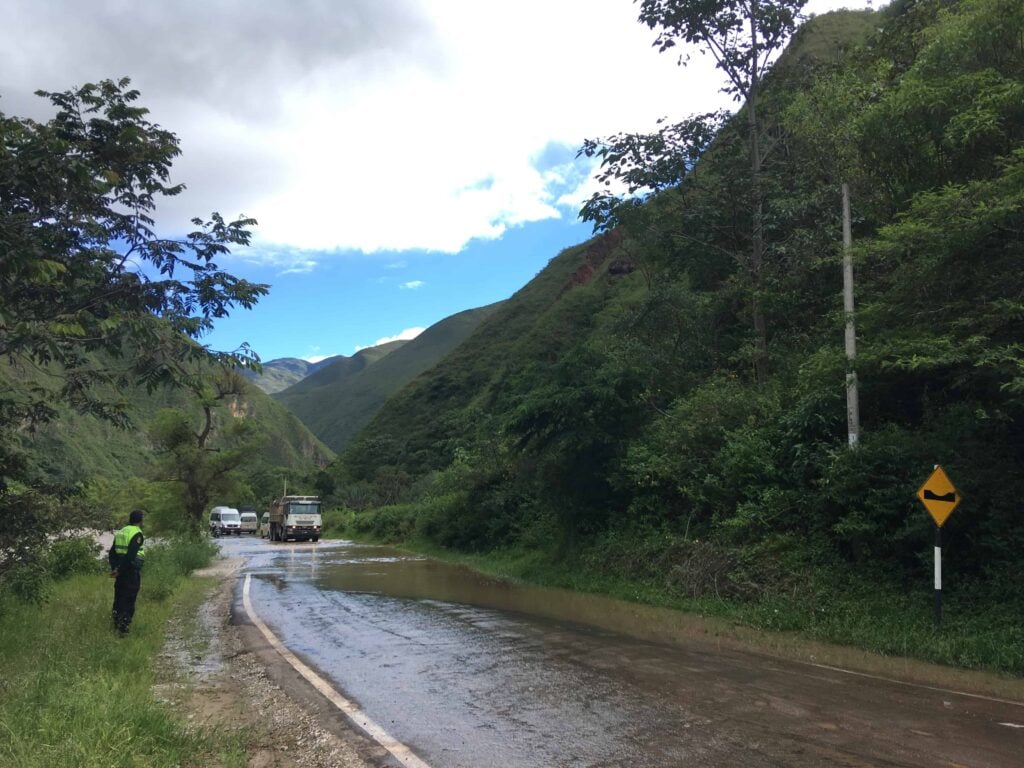

After following the hot and dry Peruvian coast north to Lambayeque, we turned east. In a single day we left the Pacific Ocean, crossed the Abra de Porculla (the lowest pass through the Andes) and descended into the cloud forest of the Amazonas Region. Along the way, we saw rice growing along the highway, we bought a huge box of enormous and delicious mangos for an incredible bargain (which we ate for the rest of the trip) and we marvelled at how, in one day, we were able to experience such amazing changes in geography.
We were travelling in February; and February in the Andes is the wet season. It’s the only month where the Inca Trail is closed and where floods and mudslides are quite common all along the mountainous and tropical parts of Peru. As we began to travel south, after a few days in Chachapoyas, we encountered rivers overflowing their banks, and violent thunderstorms on narrow mountain roads. We wondered how we would make it all the way back to Cusco and what we would still encounter en route.
Each region we passed through was different, with its own unique textiles, special types of food and distinct dialects of Quechua. Our journey traced the spine of Peru southwards, blessing us with the experience of visiting the following remarkable places.
Chachapoyas
Chachapoyas is both the capital of the Amazonas Region, as well as the name of a pre-Incan civilization referred to as the “Warriors of the Clouds.” The city of Chachapoyas lies at 2,335 metres above sea level and can be reached via flights from Lima, as well as by bus. It’s the jumping-off point to visit a variety of archeological sites and attractions related to the Chachapoya culture.
Gocta Waterfall
Located about an hour’s drive from Chachapoyas (plus a hike of several hours), Gocta is one of the world’s tallest waterfalls, with a height of 771 metres. The area around it is home to a wide variety of birds and orchids. There are several lodges close by and you can do part of the hike on horseback if you prefer.
Kuélap
These magnificent walled ruins were built by the Chachapoyas civilization, over the course of several hundred years, and sit on top of a high ridge overlooking the valley and river below. The circular structures exhibit incredibly sophisticated stone masonry skills and are easily accessible via a cable-car system constructed in 2017.
Leymebamba Museum
The Leymebamba Museum houses over 200 mummies and countless artifacts that were discovered in the nearby Laguna de los Cóndores, in the nineties. Other Chachapoya funerary sites in the area include the Sarcophagi of Karajia and the Revash Mausoleums.
Cajamarca
Cajamarca, a city in the northern highlands of Peru, is known as the place where the Inca empire came to an end when Atahualpa was captured and executed there by Francisco Pizarro. One of the largest gold mines in the world, Yanacocha, is located in the Cajamarca Region.
Ventanillas de Otuzco
Just a few kilometres outside of Cajamarca, Ventanillas de Otuzco is a pre-Inca necropolis with funerary niches carved into volcanic rock.
Cumbemayo
Located about a half an hour away from Cajamarca, the Archaeological Complex of Cumbemayo includes a vast stone forest (Los Frailones), as well as an astounding pre-Incan aqueduct that dates back to 1500 BCE. It’s a place that is rumoured to have been used to worship water; and whether you’re drawn to the hydraulic engineering, the petroglyphs or the beauty of the natural rock formations, it’s a place you can easily spend all day exploring.
Marcahuamachuco
Marcahuamachuco is rather remote and not very well-known and yet has been referred to as the “Machu Picchu of the North.” Located in La Libertad Region, its rugged position on top of a highland plateau, and its spectacular views of the surrounding mountains, also feels reminiscent of Kuélap. Even though it’s said to have been “northern Peru’s most important political, economic and military center” and a center of religious worship, it feels forgotten and you may quite possibly find yourself all alone walking along its empty pathways.
(Part 3 will conclude our trip as we travel to Chavin, Ayacucho and Andahuaylas, on our way back to Cusco.)
*As an Inset*
10 Peruvian Road Rules
1. Honking is everything
- Taxis honk at potential passengers; drivers honk on curvy mountain roads, to prevent collisions; and cars honk at pedestrians and stray dogs, as well as at each other, while yelling insults and profanities. Honking in Peru is its own kind of language.
2. Speed limits are hypothetical
- Technically, there are speed limits, but in my experience they don’t seem to be monitored; most drivers drive whatever speed they want, which is generally at least 20 km/hr faster than the “official” speed limit.
3. Right turns on red are not permitted
- Strangely enough, this rule is actually respected for the most part.
4. Not tailgating is seen as a weakness
- If you drive with a safe and responsible distance between yourself and the vehicle ahead of you, others will see this as an invitation to squeeze into the space and dangerously cut you off.
5. Don’t use your turn signal
- If you use your turn signal, you’re letting other drivers know what you intend to do and they will undoubtedly take it as a sign to speed up, to prevent you from merging or turning.
6. Beware of motorcycles
- Motorcycles generally don’t position themselves in the center of their lane, in Peru. Instead, they stick dangerously close to the outside part of the road, giving the impression that there’s enough space for cars to pass, which may not necessarily be true, especially when there’s oncoming traffic speeding towards you or when the motorcyclist has had a few too many cervezas (beers) and begins to swerve.
7. Right of way belongs to whoever feels entitled to it
- This is usually the largest or oldest (or, best of all, largest and oldest) vehicle; this can be observed especially well in roundabouts when an ancient Fuso truck enters and all the cars already in the roundabout have to stop.
8. Fixing a flat tire is cheap
- Pull up to any rundown tire shop at the side of the road and you’ll be able to get your punctured tire repaired in a matter of minutes for somewhere between S/10 to S/15 (about $3).
9. Taxis don’t have meters
- Taxis are a fast and generally inexpensive way to get around in Peruvian cities but be sure to negotiate the price before getting in. Taxis generally don’t have taximeters and a taxi driver can charge you whatever they want if you don’t ask before getting in how much the ride will be. If the price seems too high, just wait for another taxi to drive by and see if they’ll be more reasonable. Also, many “taxis” in Peru are not actually registered official taxis. Informal taxis are very common and basically anyone can put a “taxi” sign on their private car and pick up passengers as long as they are able to avoid police checkpoints.
10. Yellow/amber traffic lights mean “speed up”
- If your green light turns to yellow, there’s no need to slow down; most lights, signs and road markings are only recommendations in Peru … Just remember to honk and you’ll fit right in.




